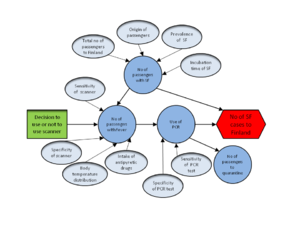Societal Wellbeing: Difference between revisions
Iranjon 95 (talk | contribs) (Created page with "Category: Online Modelling {{assessment|moderator=Jouni}} {{summary box |question = what are the important areas to Societal Well-being ? |answer= measurement of social, ec...") |
Iranjon 95 (talk | contribs) No edit summary |
||
| Line 6: | Line 6: | ||
|answer= measurement of social, economic and environmental dimensions is way to develop the concern of social well-being.}} | |answer= measurement of social, economic and environmental dimensions is way to develop the concern of social well-being.}} | ||
it is difficult to identify how the wellbeing of society is evolving, and how it should be measured. it is clear that societal wellbeing measures should include social, economic and environmental dimensions. On 19 July last year, 68 countries joined the Kingdom of Bhutan in co-sponsoring a resolution titled “Happiness: Towards a holistic approach to development,” which was adopted by consensus by the 193-member UN General Assembly. However, is relevant data available to provide a comprehensive depiction for the UK and crucially, to be able to see how wellbeing overall is changing overtime? | |||
==Scope== | ==Scope== | ||
Revision as of 10:11, 6 April 2012
| Moderator:Jouni (see all) |
|
|
| Upload data
|
| Main message: |
|---|
| Question:
what are the important areas to Societal Well-being ? measurement of social, economic and environmental dimensions is way to develop the concern of social well-being. |
it is difficult to identify how the wellbeing of society is evolving, and how it should be measured. it is clear that societal wellbeing measures should include social, economic and environmental dimensions. On 19 July last year, 68 countries joined the Kingdom of Bhutan in co-sponsoring a resolution titled “Happiness: Towards a holistic approach to development,” which was adopted by consensus by the 193-member UN General Assembly. However, is relevant data available to provide a comprehensive depiction for the UK and crucially, to be able to see how wellbeing overall is changing overtime?
Scope
Purpose
* Purpose defines the specific information need of the decision-making and the research question that is asked.
Boundaries
* Boundaries define which parts of the reality are taken into the assessment and which are excluded within
spatial, temporal and other dimensions.
Scenarios
* Scenarios define particular conditions that are of interest irrespective whether they describe
reality or not (e.g. what-if scenarios).
Intended users
* Intended users are those for whom the assessment is made.
Participants
* Participants are those who may participate in the making of the assessment.
The minimum group of people for a successful assessment is always described.
If some groups must be excluded, this must be explicitly motivated.
Definition
Upload a causal diagram and change the right name here.

Decision variables
* Decision variables: decisions that are considered.
Indicators
* Indicators: outcome variables of interest.
Value variables
* Value variables: value judgements (usually about indicators).
Other variables
* Other variables: any variables that link to the causal network and are within the boundaries of the assessment.
Analyses
* Analyses: statistical and other analyses that contain two or more variables, e.g. optimizing.
Indices
* Indices: lists of particular locations along spatial, temporal, or other dimensions.
Result
* Results of indicators and assessment-specific analyses.
Results
Conclusions
* Conclusions are based on the results, given the scope.